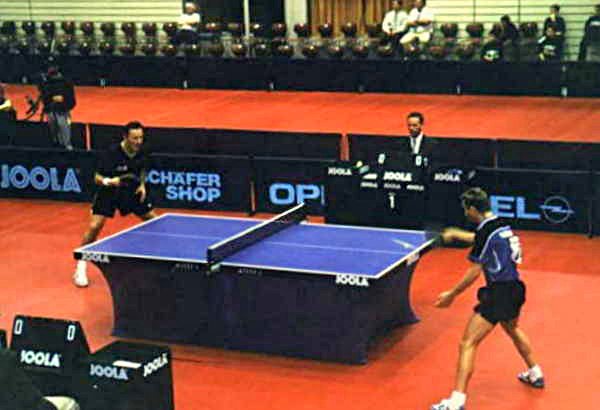In 1952 the FIM, motorcycling's international governing body, created an individual European Championship using a 500 cc engine displacement formula. In 1957, it was upgraded it to World Championship status.[3] In 1962, a 250 cc world championship was created.[3] It was in the smaller 250 cc category that companies with two-stroke motorcycles came into their own. Companies such as Husqvarna from Sweden, CZ from the former Czechoslovakia and Greeves from England, became popular due to their lightness and agility.[3] By the 1960s, advancements in two-stroke engine technology meant that the heavier, four-stroke machines were relegated to niche competitions. Riders from Belgium and Sweden began to dominate the sport during this period.[citation needed]

Motocross sometimes takes place in wet weather, leading to muddy scenes such as this and hence the term "Scrambling". Photo from New Zealand.
By the late 1960s, Japanese motorcycle companies began challenging the European factories for supremacy in the motocross world. Suzuki claimed the first world championship for a Japanese factory when Joël Robert won the 1970 250 cc crown.[6] Motocross also began to grow in popularity in the United States during this period, which fueled an explosive growth in the sport. The first stadium motocross event was held in 1972 at the Los Angeles Coliseum.[7] In 1975, a 125 cc world championship was introduced.[8] European riders continued to dominate motocross throughout the 1970s but, by the 1980s, American riders had caught up and began winning international competitions.[9]
During the early 1980s, Japanese factories presided over a technology boom in motocross. The typical two-stroke air-cooled, twin-shock rear suspension machines gave way to machines that were water-cooled and fitted with single-shock absorber rear suspension. By the 1990s, increasingly stringent environmental laws in California forced manufacturers to develop environmentally friendly four-stroke technology.[10][11] At the turn of the century, all the major manufacturers have begun competing with four-stroke machines. European firms also experienced a resurgence with Husqvarna, Husaberg and KTM winning world championships with four-stroke machinery.
The sport evolved with sub-disciplines such as stadium events known as supercross and arenacross held in indoor arenas. Freestyle motocross (FMX) events where riders are judged on their jumping and aerial acrobatic skills have gained popularity, as well as supermoto, where motocross machines race on both tarmac and off road. Vintage motocross events have also become popular with riders competing on bikes usually pre-dating the 1975 model year.[citation needed]




